【Beautiful JUC Part.11】Future和Callable治理线程
【Beautiful JUC Part.11】Future和Callable治理线程
一、为什么需要Future和Callable
1、Runnable的缺陷
线程没有返回值

run方法无法抛出checked Exception
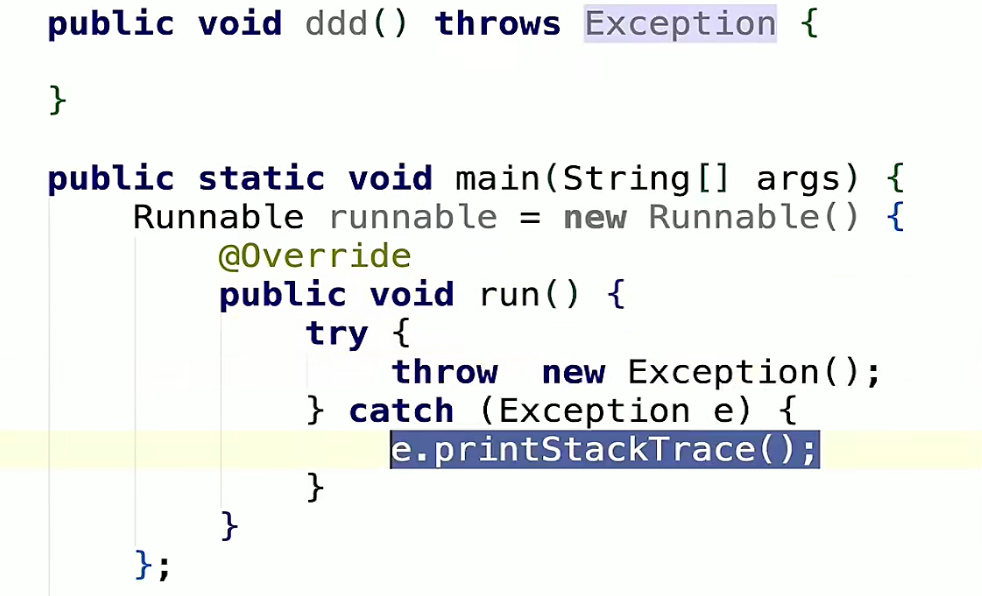
这是因为run()方法在声明的时候就规定好了形式。只能通过try/catch捕获。
2、Callable接口
类似于Runnable,被其他线程执行的任务
实现call方法
有返回值
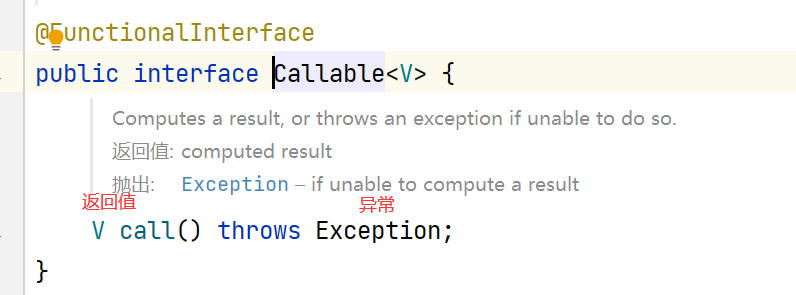
3、Future类
作用:一个方法的计算可能会很耗时,这个时候,在计算的过程中,没有必要在原地等待计算完毕返回,这也会浪费自己的时间,这不是明智的选择。如果遇到耗时的方法,使用子线程去执行,子线程执行的时候,我可以去做其他的事情,到了想获取结果的时候,通过Future去获取子线程的结果。
4、Callable和Future的关系
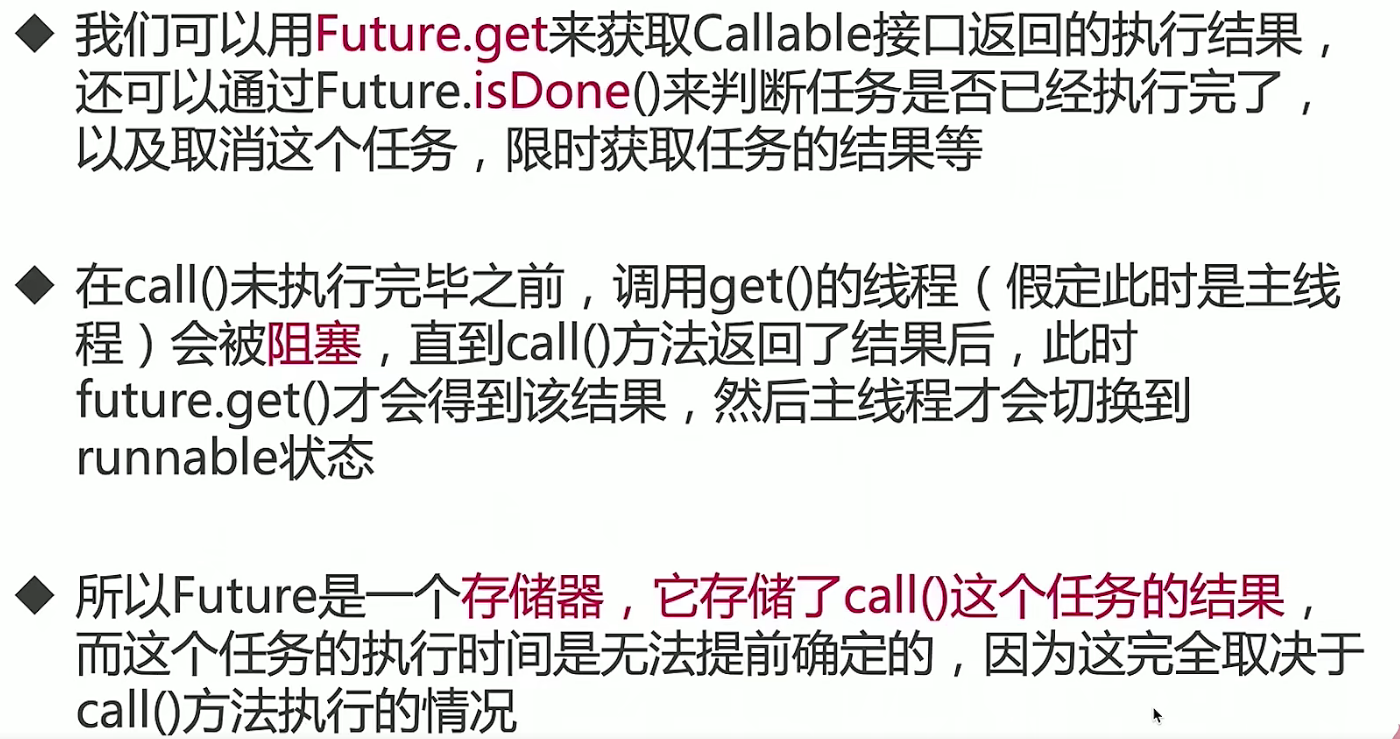
二、Future的主要方法:一共五个
1、get()方法:获取结果
get方法的行为取决于Callable任务的状态,只有以下这5种情况:
- 任务正常完成:get方法会立刻返回结果
- 任务尚未完成(任务还没开始或者进行中):get将阻塞并直到任务完成
异常的情况:
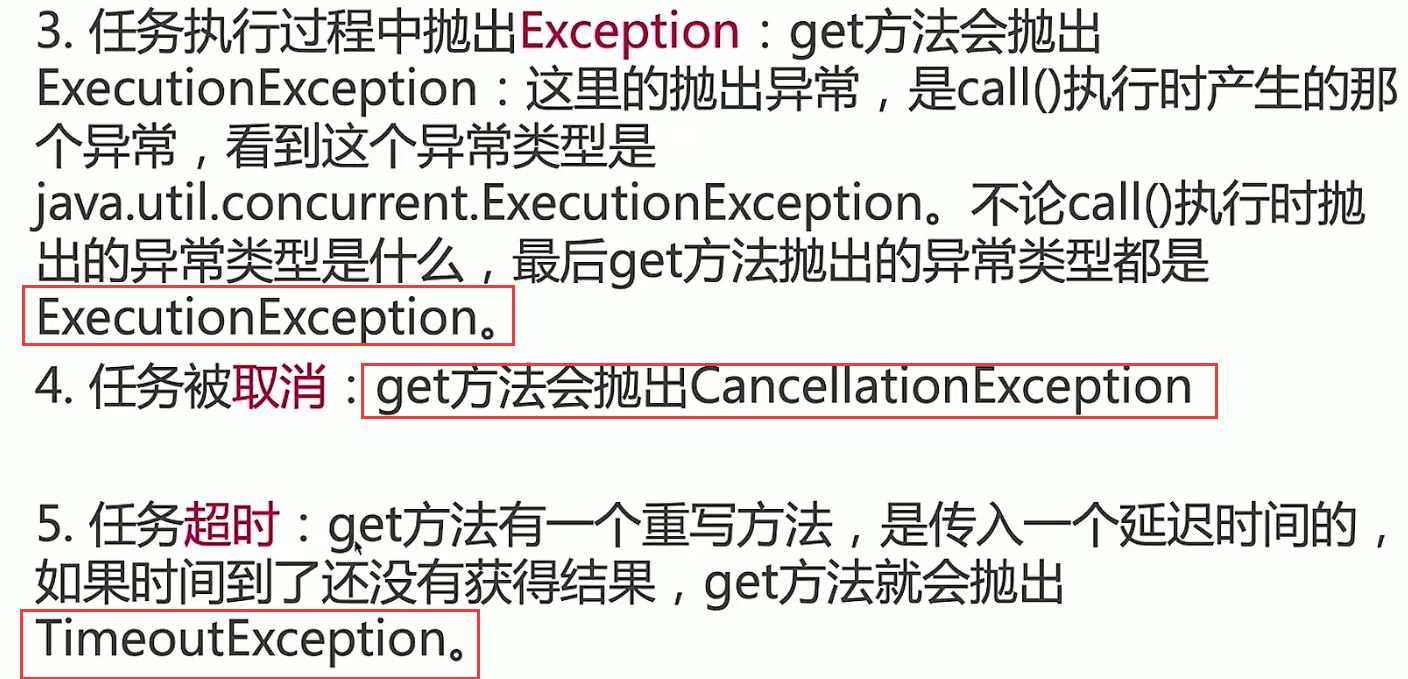
2、get(long timeout, TimeUtil unit):有超时的获取

3、cancel()方法
取消任务的执行
4、isDone()方法
判断线程是否执行完毕,并不代表任务是成功的执行了,异常和中断也算是执行完毕了。
5、isCancelled()方法
判断是否被取消
三、Future代码演示
1、用法一:线程池的submit方法返回Future对象
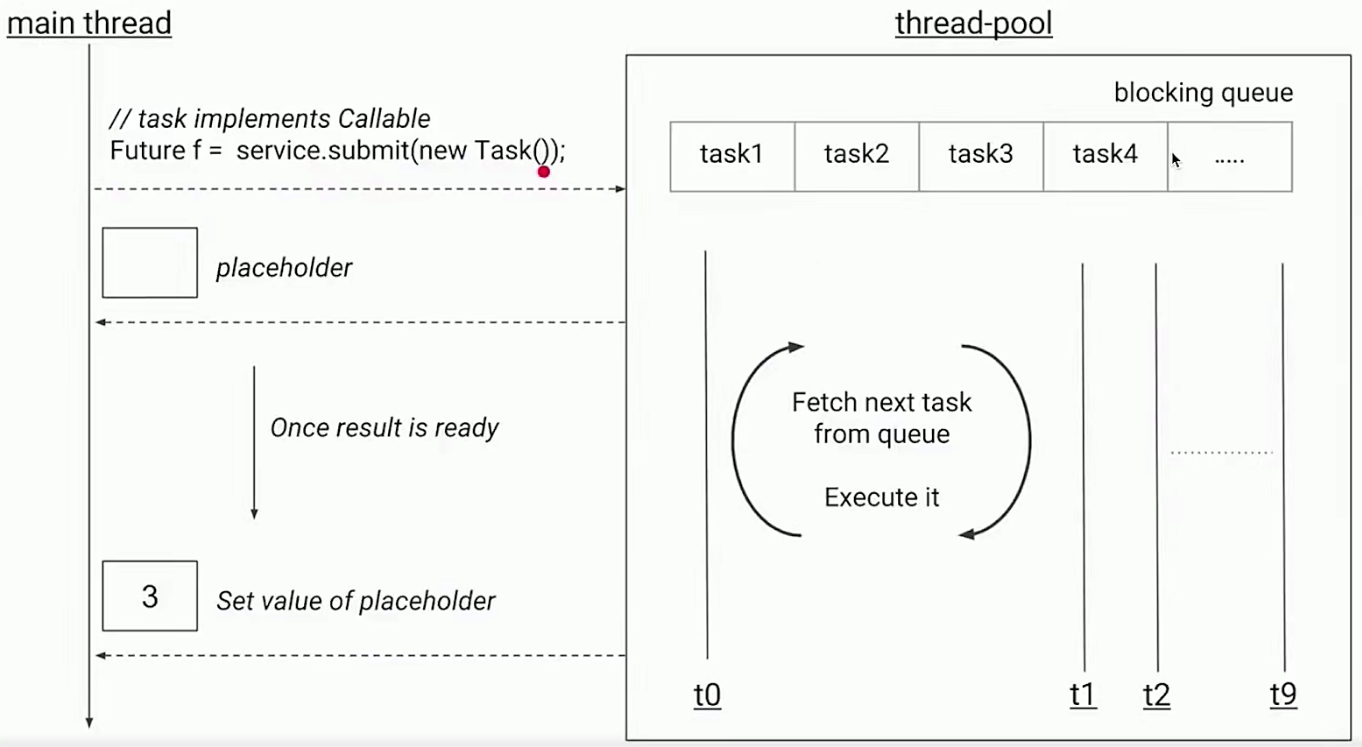

import java.util.Random;
import java.util.concurrent.*;
/**
*描述:演示一个Future的使用方法
*/
public class OneFuture {
public static void main(String[] args) {
ExecutorService service = Executors.newFixedThreadPool(10);
Future<Integer> future = service.submit(new CallableTask());
try {
System.out.println(future.get());
} catch (InterruptedException e) {
e.printStackTrace();
} catch (ExecutionException e) {
e.printStackTrace();
}
service.shutdown();
}
static class CallableTask implements Callable<Integer> {
@Override
public Integer call() throws Exception {
Thread.sleep(3000);
return new Random().nextInt();
}
}
}
2、用法二:多个任务,用Future数组来获取结果
import java.util.ArrayList;
import java.util.Random;
import java.util.concurrent.*;
/**
* 描述:演示批量提交任务时,用List来批量接收结果
*/
public class MultiFutures {
public static void main(String[] args) {
ExecutorService service = Executors.newFixedThreadPool(2);
ArrayList<Future> futures = new ArrayList<>();
for (int i = 0; i < 20; i++) {
Future<Integer> future = service.submit(new CallableTask());
futures.add(future);
}
for (int i = 0; i < 20; i++) {
Future<Integer> future = futures.get(i);
try {
Integer integer = future.get();
System.out.println(integer);
} catch (InterruptedException e) {
e.printStackTrace();
} catch (ExecutionException e) {
e.printStackTrace();
}
}
}
static class CallableTask implements Callable<Integer> {
@Override
public Integer call() throws Exception {
Thread.sleep(3000);
return new Random().nextInt();
}
}
}
3、任务执行过程中抛出Exception和isDone展示
抛出ExecutionException
import java.util.concurrent.*;
/**
* 描述:演示get方法过程中抛出异常,for循环为了演示抛出Exception的时机:
* 并不是说一产生异常就抛出,直到我们get执行时,才会抛出。
*/
public class GetException {
public static void main(String[] args) {
ExecutorService service = Executors.newFixedThreadPool(2);
Future<Integer> future = service.submit(new CallableTask());
try {
for (int i = 0; i < 5; i++) {
System.out.println(i);
Thread.sleep(500);
}
System.out.println(future.isDone());
future.get();
} catch (InterruptedException e) {
e.printStackTrace();
System.out.println("InterruptedException异常");
} catch (ExecutionException e) {
e.printStackTrace();
System.out.println("ExecutionException异常");
}
}
static class CallableTask implements Callable<Integer> {
@Override
public Integer call() throws Exception {
throw new IllegalArgumentException("Callable抛出异常");
}
}
}
任务在submit的时候就已经开始执行了,异常已经抛出了,但是只有当get()的时候才会感知。
调用future.isDone()可以看出已经结束。
4、演示get超时方法
需要注意超时后需要处理,调用future.cancel(),演示传入cancel传入true和false的区别,代表是否中断正在执行的任务。
import java.util.concurrent.Callable;
import java.util.concurrent.ExecutionException;
import java.util.concurrent.ExecutorService;
import java.util.concurrent.Executors;
import java.util.concurrent.Future;
import java.util.concurrent.TimeUnit;
import java.util.concurrent.TimeoutException;
/**
* 描述: 演示get的超时方法,需要注意超时后处理,调用future.cancel()。演示cancel传入true和false的区别,代表是否中断正在执行的任务。
*/
public class Timeout {
private static final Ad DEFAULT_AD = new Ad("无网络时候的默认广告");
private static final ExecutorService exec = Executors.newFixedThreadPool(10);
static class Ad {
String name;
public Ad(String name) {
this.name = name;
}
@Override
public String toString() {
return "Ad{" +
"name='" + name + '\'' +
'}';
}
}
static class FetchAdTask implements Callable<Ad> {
@Override
public Ad call() throws Exception {
try {
Thread.sleep(3000);
} catch (InterruptedException e) {
System.out.println("sleep期间被中断了");
return new Ad("被中断时候的默认广告");
}
return new Ad("旅游订票哪家强?找某程");
}
}
public void printAd() {
Future<Ad> f = exec.submit(new FetchAdTask());
Ad ad;
try {
ad = f.get(2000, TimeUnit.MILLISECONDS);
} catch (InterruptedException e) {
ad = new Ad("被中断时候的默认广告");
} catch (ExecutionException e) {
ad = new Ad("异常时候的默认广告");
} catch (TimeoutException e) {
ad = new Ad("超时时候的默认广告");
System.out.println("超时,未获取到广告");
boolean cancel = f.cancel(true);
System.out.println("cancel的结果:" + cancel);
}
exec.shutdown();
System.out.println(ad);
}
public static void main(String[] args) {
Timeout timeout = new Timeout();
timeout.printAd();
}
}
5、cancel方法:取消任务的执行
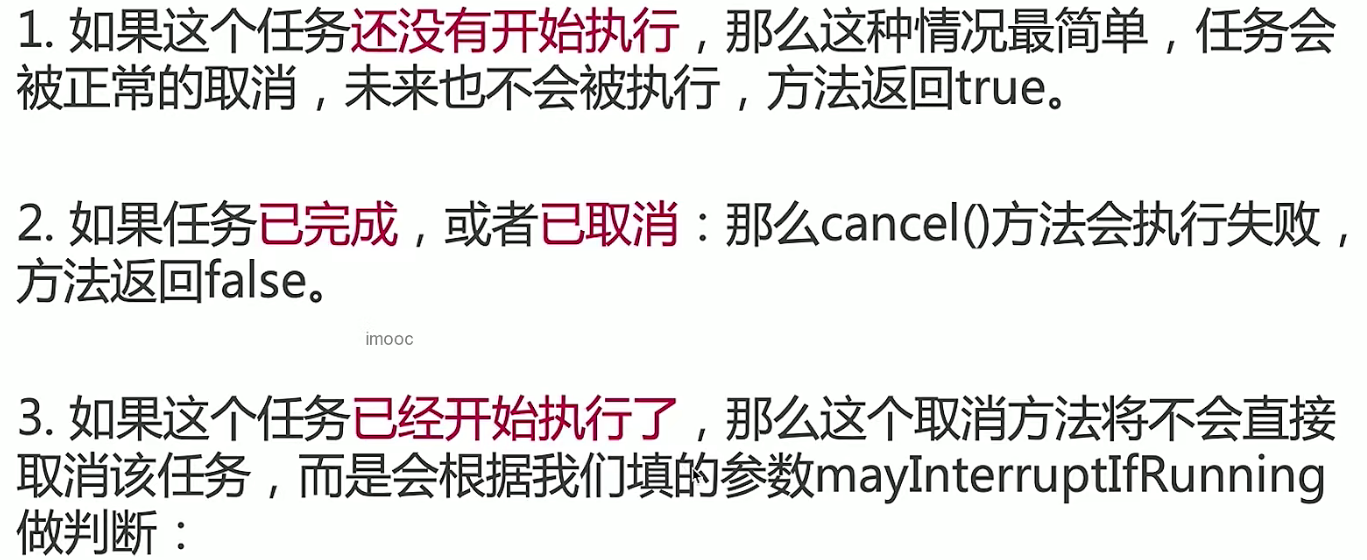
传入true与false的时机
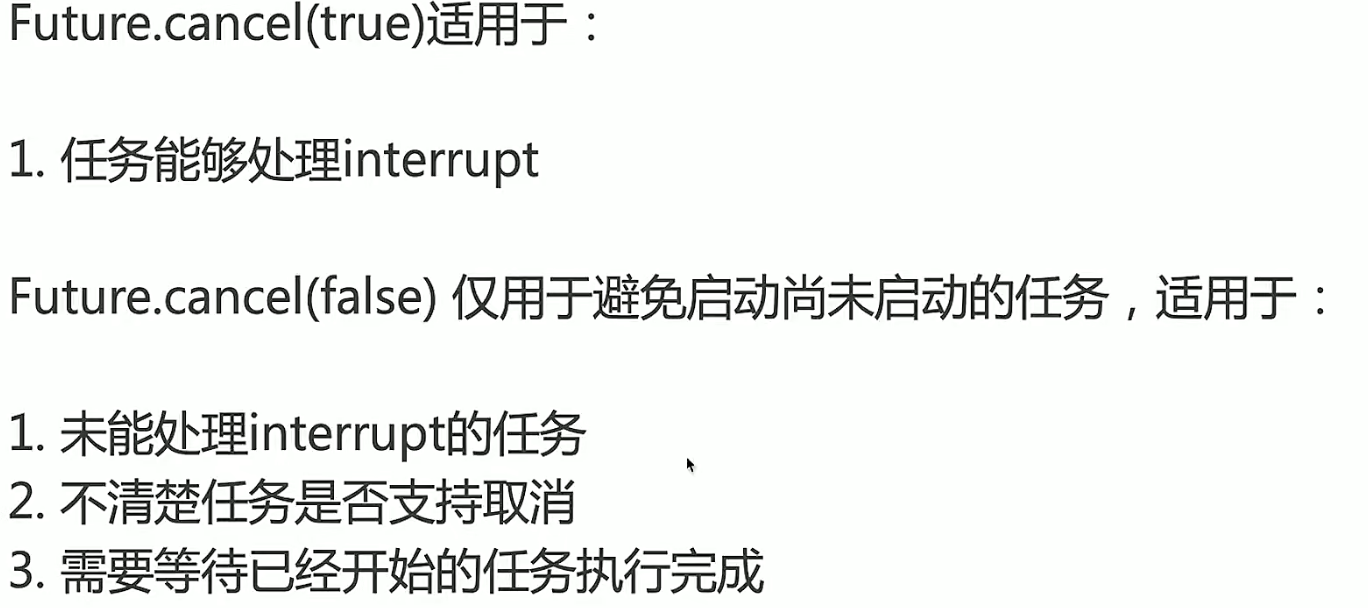
6、用法三:用FutureTask来获取Future和任务的结果
FutureTask是一种包装器,可以把Callable转化成Future和Runnable,它同时实现二者的接口。
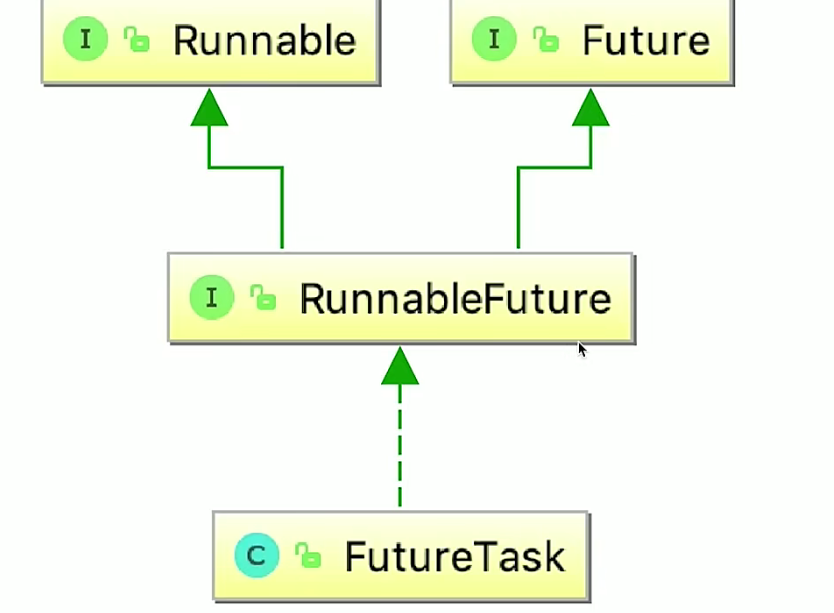
所以它既可以作为Runnable被线程执行,又可以作为Future得到Callable的返回值。

代码演示
import java.util.concurrent.*;
/**
* 描述:演示FutureTask的用法
*/
public class FutureTaskDemo {
public static void main(String[] args) {
Task task = new Task();
FutureTask<Integer> integerFutureTask = new FutureTask<>(task);
//new Thread(integerFutureTask).start();
ExecutorService service = Executors.newCachedThreadPool();
service.submit(integerFutureTask);
try {
System.out.println("task运行结果: " + integerFutureTask.get());
} catch (InterruptedException e) {
e.printStackTrace();
} catch (ExecutionException e) {
e.printStackTrace();
}
}
}
class Task implements Callable<Integer> {
@Override
public Integer call() throws Exception {
System.out.println("子线程正在计算");
Thread.sleep(3000);
int sum = 0;
for (int i = 0; i < 100; i++) {
sum += i;
}
return sum;
}
}
7、Future的注意点
当for循环批量获取future的结果时,容易发生一部分线程很慢的情况,get方法调用时应使用timeout限制
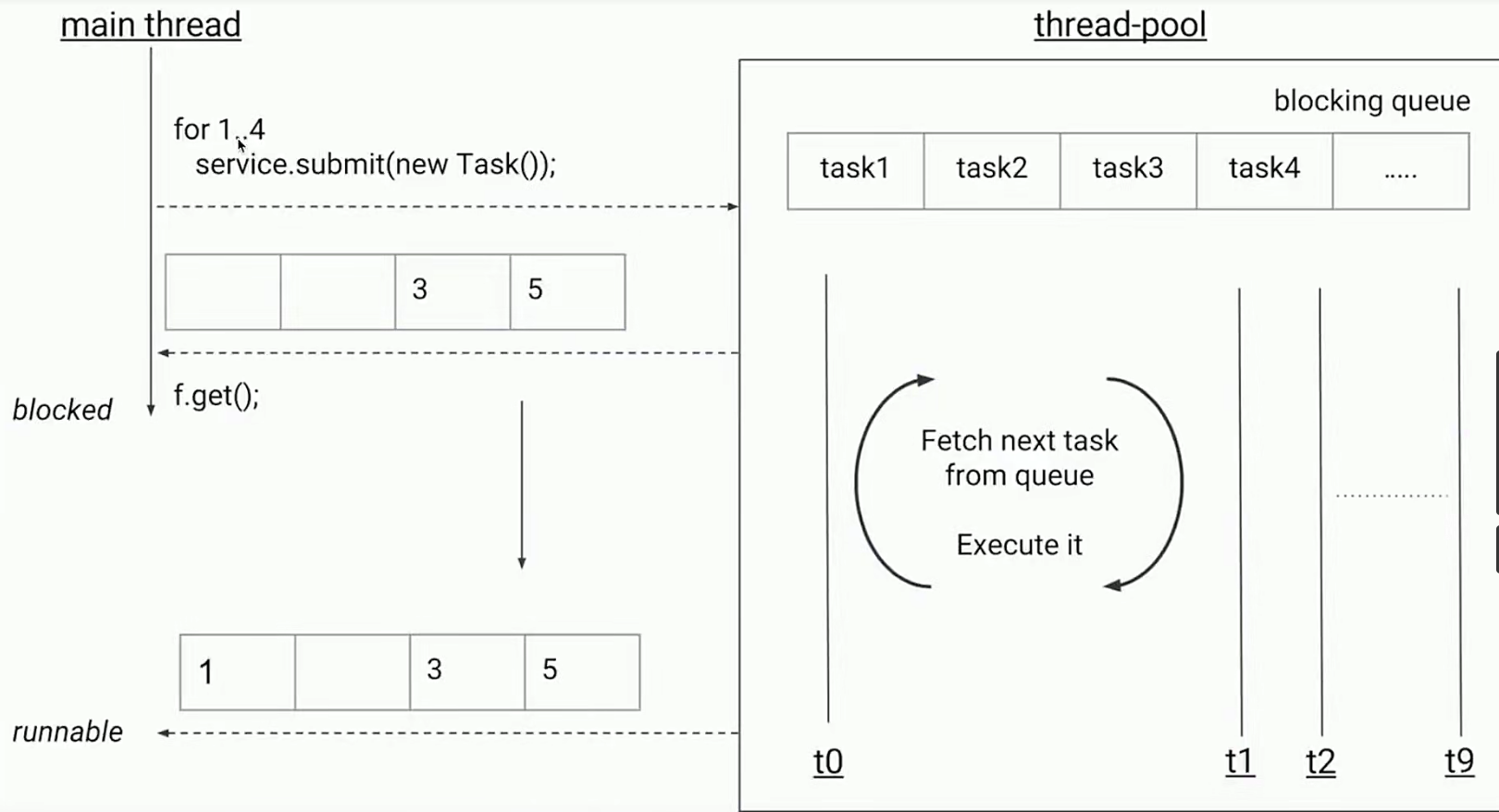
Future的生命周期不能后退




【推荐】国内首个AI IDE,深度理解中文开发场景,立即下载体验Trae
【推荐】编程新体验,更懂你的AI,立即体验豆包MarsCode编程助手
【推荐】抖音旗下AI助手豆包,你的智能百科全书,全免费不限次数
【推荐】轻量又高性能的 SSH 工具 IShell:AI 加持,快人一步
· TypeScript + Deepseek 打造卜卦网站:技术与玄学的结合
· Manus的开源复刻OpenManus初探
· AI 智能体引爆开源社区「GitHub 热点速览」
· 三行代码完成国际化适配,妙~啊~
· .NET Core 中如何实现缓存的预热?